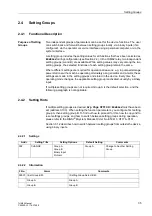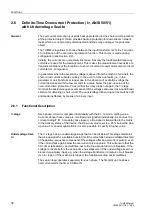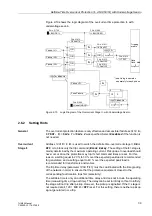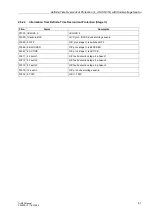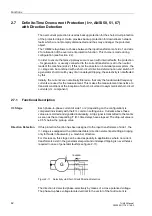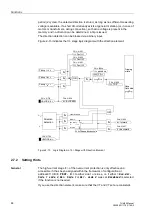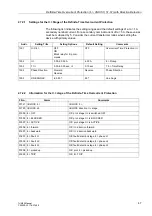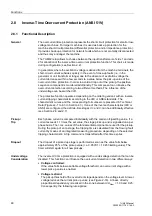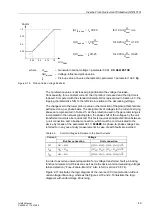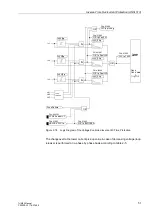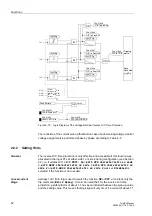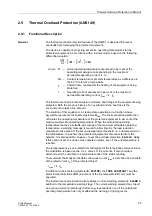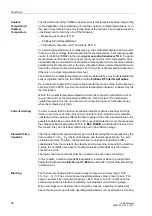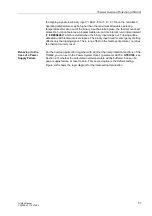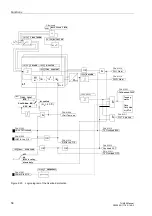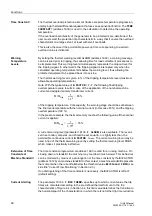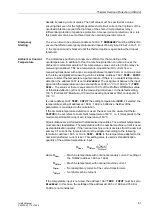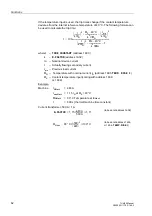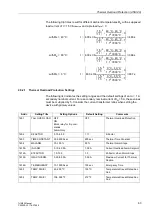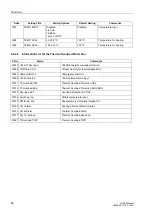
Inverse-Time Overcurrent Protection (ANSI 51V)
49
7UM62 Manual
C53000-G1176-C149-3
:
Figure 2-16
Pick-up Value Voltage Restraint
The
I
p reference value is decreased proportional to the voltage decrease.
Consequently, for a constant current
I
the
I
/
I
p ratio is increased and the trip time is
reduced. Compared with the standard characteristics represented in Section 4.3, the
tripping characteristic shifts to the left side in relation to the decreasing voltage.
The changeover to the lower pick-up value or the reduction of the pickup threshold are
performed on a per phase basis. The assignments of voltages to the current-carrying
phases are represented in Table 2-5. As the protection used in the generator range is
incorporated in the network grading plan, the phase shift of the voltages by the unit
transformer must also be considered. This facts requires principle distinction between
a unit connection and a busbar connection, which must be communicated to the
device by means of the parameter
. As phase-to-phase voltages are
referred to in any case, faulty measurements in case of earth faults are avoided.
In order to avoid an unwanted operation for a voltage transformer fault, a blocking
function miniature circuit breaker as well as via the device-internal measuring voltages
failure detection (”Fuse–Failure–Monitor”, also refer to section 2.38.1.4).
Figure 2-17 illustrates the logic diagram of the inverse O/C time protection without
undervoltage influencing, whereas the Figures 2-18 and 2-19 illustrate the logic
diagrams with undervoltage influencing.
I U
( )
pickup
I
p
U
U
no m
--------------
⋅
=
for 0.25
U
U
nom
-------------
1.00
≤
≤
I U
( )
p ic ku p
I
p
1.00
⋅
=
for 1.00
U
U
nom
-------------
∞
≤
≤
I U
( )
pickup
I
p
0.25
⋅
=
for 0.00
U
U
nom
-------------
0.25
≤
≤
U U
nom
⁄
Factor
1.0
0.25
0.5
0.75
0.25
0.5
0.75
1.0
where
U
nom
– Generator nominal voltage = parameter
I
(U)
pickup
– Voltage-influenced pickup value
I
p
– Pick-up value of inverse characteristic parameter = parameter
Table 2-5
Control Voltages in Relation to the Fault Currents
Current
Voltage
Busbar connection
Unit connection
I
L1
U
L1
– U
L2
((U
L1
– U
L2
) – (U
L3
– U
L1
)) /
√
3
I
L2
U
L2
– U
L3
((U
L2
– U
L3
) – (U
L1
– U
L2
)) /
√
3
I
L3
U
L3
– U
L1
((U
L3
– U
L1
) – (U
L2
– U
L3
)) /
√
3

